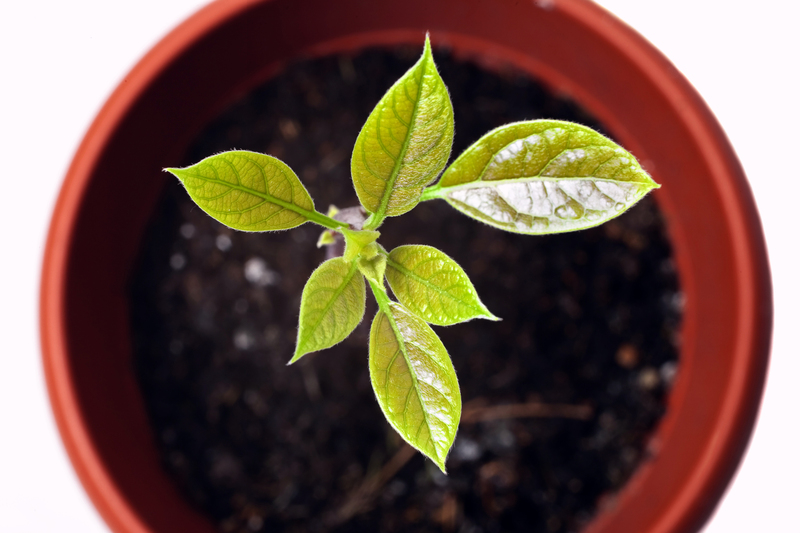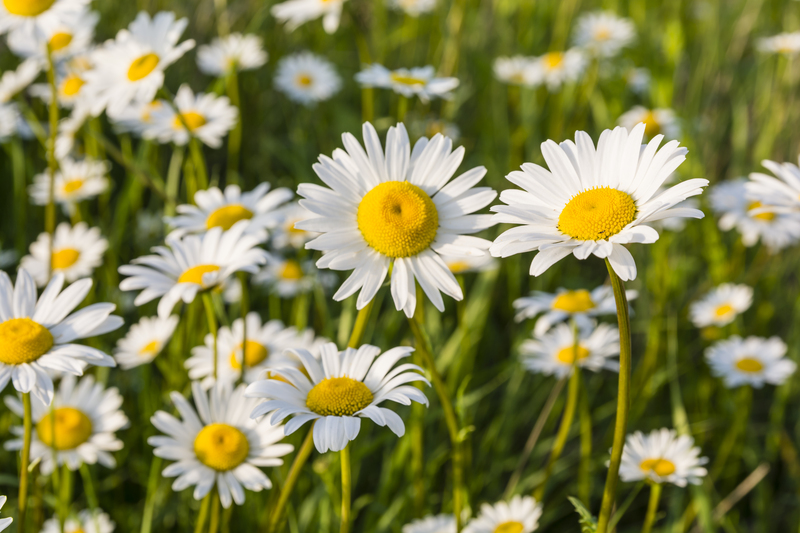A Beginner's Guide to a Child-Friendly Landscape
Posted on 01/06/2025
A Beginner's Guide to a Child-Friendly Landscape
Are you aspiring to transform your backyard or garden into a safe, exciting, and engaging outdoor haven for your children? Whether you have toddlers or energetic preteens, designing a child-friendly landscape requires thoughtful planning, creativity, and a keen focus on both safety and fun. In this comprehensive guide, we'll walk you through every step of designing a child-centric outdoor space that fosters growth, adventure, and lasting memories.
Why Create a Child-Friendly Landscape?
For many families, the outdoors is a valuable extension of the living space. A kid-friendly landscape not only increases your home's curb appeal but also offers educational, social, and physical benefits for children:
- Encourages Physical Activity: Outdoor landscapes provide ample opportunities for play, movement, and exercise.
- Stimulates Imagination: Natural settings ignite creativity and imaginative play.
- Promotes Social Skills: Shared outdoor areas nurture socialization and teamwork.
- Supports Learning: Exploring nature develops curiosity and practical knowledge.
- Connects Kids with Nature: Outdoor exposure fosters appreciation for the environment.
In short, a child-safe garden or backyard becomes an inspiring stage for joyful discovery and development.

Key Considerations Before Getting Started
To create a child-friendly outdoor space that brings lasting joy, it's crucial to think through the following aspects:
1. Safety First
- Fencing: Ensure the area is properly enclosed to keep kids safe from roads or neighbors' yards. Use child-safe gates and make sure fencing is the appropriate height.
- Surface Material: Avoid hard, slippery, or sharp surfaces. Opt for soft grass, bark mulch, or rubber matting under play equipment.
- Plant Choices: Select non-toxic, non-thorny, and non-allergenic plants. Remove any poisonous species already growing in your yard.
- Water Hazards: Secure ponds or pools with fencing and covers. Consider splash pads or shallow water features instead.
- Sun Protection: Integrate shaded zones (trees, pergolas, umbrellas) and consider the sun's path during the day.
2. Age Appropriateness
Design your child-centered garden according to the ages and developmental stages of your kids. For toddlers, prioritize soft surfaces, simple paths, and low play elements. For older children, offer spaces for sports, climbing, and imaginative play.
3. Space and Layout
Even small yards can be magical with creative zoning. Designate separate areas for different activities such as exploration, active play, gardening, and relaxation. Guide movement with winding paths and create visual separation using hedges or raised beds.
4. Maintenance and Durability
A kid-friendly backyard should be easy to upkeep. Choose low-maintenance plants and robust materials. Design for easy clean-up and access so the whole family can help maintain the landscape.
Planning Your Child-Friendly Landscape
Step 1: Map Out Your Space
- Sketch Your Yard: Mark property boundaries, existing structures, and natural features (trees, slopes, sheds, etc.).
- Assess Sunlight: Observe which areas get full sun, partial sun, or shade.
- Take Measurements: Measure dimensions to help decide the best placement for play zones and activities.
Step 2: List Must-Have Features
Prioritize the essential elements for your kid-friendly landscape based on your children's ages, interests, and your family's lifestyle. Some popular backyard features for children include:
- Play equipment (swings, slides, climbing frames)
- Sandboxes or mud kitchens
- Mini gardens or raised vegetable beds
- Paths for bikes or scooters
- Water play areas (splash pads, shallow streams, misting stations)
- Secret hideaways (teepees, willow tunnels, fairy gardens)
- Outdoor art stations (easel, chalkboard walls)
- Picnic or storytime corners
Step 3: Design with Child Development in Mind
Spaces for children should promote motor skills, independence, and curiosity. Include features that:
- Encourage active play (climbing, swinging, running)
- Provide sensory experiences (different textures, scents, colors, water, sound)
- Allow for creative and imaginative play
- Support social interaction with friends and siblings
Best Plants for a Safe, Engaging Kid's Garden
Criteria for Choosing Plants
- Non-toxic and Edible: Avoid plants that are poisonous if ingested. Consider herbs, berries, and other edibles for learning and snacking.
- Soft Foliage: Select plants with non-thorny, gentle leaves to prevent scratches or injuries.
- Interactive Plants: Opt for varieties that invite touch, smell, or taste. Sensory gardens are a favorite feature in most child-focused landscapes.
- Pollinator-friendly: Support bees, butterflies, and birds for nature observation and environmental education.
Kid-Friendly Plant Suggestions
- *Sunflowers* - Tall, dramatic, and easy to grow. Children love watching them bloom and harvesting seeds.
- *Strawberries* - Fun to pick, sweet to eat, and ideal for container gardening.
- *Snapdragons* - Bright, colorful, and fun to "snap."
- *Lamb's Ear* - Soft, fuzzy leaves perfect for tactile exploration.
- *Mint* - Fragrant, easy to grow, and adds a sensory dimension (but keep contained as it spreads quickly).
- *Lavender* - Silvery foliage, aromatic flowers, and attracts pollinators.
- *Nasturtiums* - Edible flowers with lively colors and a peppery taste.
Creating Playful and Safe Outdoor Features
Active Play Zones
An essential part of any child-friendly backyard landscape is a space for active movement. Here are some ideas:
- Swings and Slides: Choose age-appropriate equipment and install on soft ground. Regularly inspect for safety.
- Balance Beams and Climbing Frames: Encourage coordination and confidence.
- Tricycle Paths: Use smooth pavers or compacted gravel for racing around the garden in safety.
Quiet Retreats & Imagination Stations
- Teepee or Playhouse: Provide a cozy spot for reading, drawing, or imaginative play.
- Fairy or Dinosaur Garden: Small themed corners spark storytelling and role-play.
Nature Interaction Areas
- Wildflower Patches: Attract butterflies and bees for close observation.
- Pondless Streams: Water magic without drowning risks.
- Digging Pits: Let kids excavate in a controlled, safe sandbox or dirt area.
Creative Corners
- Art zone with weatherproof chalkboard or mural wall
- Outdoor musical instruments like xylophones or drums made from recycled items
- DIY mud kitchens for sensory-rich play
Practical Tips for a Safe, Low-Maintenance Kid's Garden
- Choose resilient groundcovers: Clover, creeping thyme, or soft turf can withstand trampling better than regular grass.
- Avoid tripping hazards: Keep walkways even and repair loose stones or edging.
- Keep sightlines open: Let adults keep an eye on playing children.
- Use raised beds or containers: Simplifies gardening with little ones and keeps edible plants away from pets.
- Encourage participation: Give children their own space to dig, plant, and water.
- Store tools safely: Establish a spot for safely stashing sharp or hazardous equipment out of children's reach.
Encouraging Learning and Lifelong Skills
A landscape designed for kids isn't just about fun--it's a rich environment for learning. Here's how to make the most of your garden's teaching moments:
- Plant a vegetable patch together: Teaches patience, responsibility, and basic biology.
- Start a compost pile: Explains the cycle of decay and sustainability fundamentals.
- Watch weather and wildlife: Create a bird feeder or mini weather station.
- Keep a nature journal: Record plants, bugs, and discoveries daily or weekly.
Maintenance and Seasonal Upkeep
- Regular Safety Checks: Inspect play equipment and fencing, prune overgrowth and remove any hazards.
- Weeding & Watering: Involve kids in easy garden chores to foster a sense of ownership.
- Mulching: Retains moisture, reduces weeds, and keeps surfaces soft for play.
- Refreshing Zones: Rotate toys and add seasonal activities (pumpkin patches, snow play, etc.).
Common Mistakes to Avoid When Planning a Child-Friendly Garden
- Ignoring Age-Appropriateness: Install play equipment suited to your child's specific developmental stage and always plan for future needs.
- Using Toxic Plants: Double-check plant lists and remove any potentially harmful species like oleander, foxglove, or slugs-attracting mushrooms.
- Lack of Shade: Children burn faster--build in tree canopies, shade sails, or pergolas.
- Poor Drainage: Avoid areas that flood or stay soggy after rain for play zones.
- Overcomplicating the Design: Children thrive in simple, open-ended environments rather than over-the-top, theme-park style layouts.

Conclusion: Enjoying Your Child-Centric Outdoor Space
Designing a child-friendly landscape might feel daunting, but the rewards are immense: your children will have a personal playground where they can develop physical skills, spark their creativity, and grow stronger family bonds. Remember to balance fun and imagination with safety and practicality for a beautiful backyard or garden that evolves alongside your family.
If you're unsure about plant choices or installation, consult a local nursery or professional landscaper familiar with family-friendly landscapes. Or better yet, involve your kids every step of the way--the best memories are made together outdoors!
Ready to get started? Use this guide, unleash your creative side, and watch as your backyard transforms into a sanctuary of joy, exploration, and memory-making for your children.
Further Reading and Resources
- Nature Activities for Families - National Wildlife Federation
- Family Activities in the Garden - RHS
- KidsGardening.org - Ideas and Lessons
With thoughtful planning and a dash of inspiration, your dream of a fun and safe outdoor play space for children is entirely within reach. Happy gardening!

